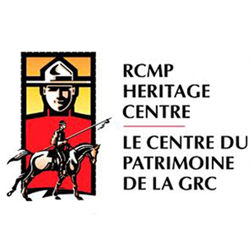Larry Burden’s This Day In The RCMP
The achievements and contributions of the Force have been built upon the individual contributions of many past Veterans. These contributions have largely been forgotten.
Veteran #35982 Sgt. Larry Burden who served in “E” Division for 20 years has spent over ten years researching and summarizing these achievements by specific date. Nearly every day, Larry sends out an email message with a selection from his work in progress manuscript “This Day In The RCMP” to individuals interested in these historical notes.
In an effort to share his research to a large group, Larry has agreed to permit us to develop a webpage on our website. Each webpage will post Larry’s historical notations over the past week.
If you wish to contact Larry Burden or provide additional information about his research, please email him at larryburden8@gmail.com.
The following are Larry’s latest “This Day In The RCMP” listings.
July 21
1941 – The 7th reinforcement draft to Canadian Provost Corps during WWII included; Constables #13660 Temple Clark, #13624 Alfred Baxter, #13646 William Henry and #13642 Erlendur Erlendson.
1947 – Five members of the RCMP lose all of their personal effects when the RMS “Nascopie” sinks near Cape Dorset, NWT.
#O.341 Inspector Albert W. Parsons, along with constables #10196 Robert Hamilton #10416 William Stewart, #13272 Arthur R. Bates, #14554 Murray L. Cottell and S.E. Decker were being transport to Chesterfield Inlet North West Territory aboard the 2500 ton, 285 ½ foot long steamer-icebreaker “Nascopie”. As the ship approached the entrance to Cape Dorset harbour it struck an uncharted steeply rising reef off of Beacon Island. The Royal Mail ship Nascopie owned and operated by the Hudson Bay Company had an illustrious history having served both the government and her owners in two world wars, fighting off a German Uboat attack in WW1. Designed and built in Scotland in 1911she was named after the First Nations people of Quebec and Labrador she had been the lifeline to many in the Arctic for forty years. She remained stranded on the reef for over two months when she was broken in half by a storm on September 25th and her bow slid into deep water. The remainder of the ship’s stern, clung to the reef until another storm on October 15th took her to the bottom.
The wreck of the Nascopie remained undisturbed for nearly fifty years until Paul Beilstein lead a team of divers, rediscovered her in 1997 and placed a plaque on the reef to commemorate the 50th anniversary of her sinking.
1993 – Commissioners Commendations for bravery were earned by # 39745 Constable Richard A. Patenaude and his wife, after they arrested a man who was wielding axe man during the break and enter into the home of an elderly couple. Even though Constable Patenaude was injured in the process, the assailant was subdued and arrested. (Looking for more detail)
July 22
1876– James Farquharson Macleod, C.M.G. (1836-1894) becomes the second permanent Commissioner of the NWMP and serves until October 31, 1880. Born in Drynoch, Isle of Sky, Scotland Macleod was one of the most colourful and interesting Commissioners in the History of the Force, having been a militia officer, lawyer, Policeman magistrate, judge, and politician. His family emigrated to Richmond Hill Ontarion in 1845 because his father a soldier who had father, fallen seriously ill while on military service in Demerara (Guyana) and had lost seven brothers to tropical diseases while they were serving in the British and Indian armies decided to leave Scotland to avoid a similar fate for his sons. Educated at Upper Canada College and passing the bar examinations at Osgoode Hall he moved to Bowmanville Ontario and practiced law from 1860 to 1870. While living in Bowmanville he became a Captain in the Bowmanville Volunteer Militia Rifle Company, where he saw action in the Trent Affair (1861) and the Fenian Raids (1866). Macleod served as brigade major with the Wolseley expedition in 1870 during the Red River rebellion in Manitoba. In 1873 Prime Minister Macdonald offered him a commission as superintendent in the newly established North-West Mounted Police He founded Ft Macleod, suppressed the illegal whisky trade and gained the trust of the Blackfoot and Blood nations. In 1885 relationships between he and Commissioner French began to deteriorate so he accepted an appointment as a stipendiary magistrate for the North-West Territories on and left the force on January 1st 1876. Six months later French resigned and the position of Commissioner was offered to him retaining his appointment as stipendiary magistrate under the terms of the North-West Territories Act of 1875. Macleod had a special admiration and respect for the native people of the region and his tone of patience, reason, and diplomacy in dealing with them made relationship between the Mounties and the locals populace survived until the 1890s.
By 1878 he was becoming seriously concerned about the rapidly decreasing numbers of buffalo on the plains. By then Chief Sitting Bull had fled the United States with his band of nearly two hundred after the Battle of the Little Big Horn and sought refuge from the American military in Canada. With the Souix taking refuge, competition for an increasingly scarce food supply intensified and threatened to lead to warfare among the plains tribes. In an effort to stem the slaughter of the buffalo Macleod introduced legislation in the North West Territories Council to regulate the buffalo hunt. Though he meant well the regulations had little effect on the destruction of the primary food source for the native people and early 1879 all the plains tribes faced starvation. Working himself to the point of near exhaustion (he travelled more than 2,300 miles by horse in 1879 to conduct police work and to fulfill his judicial responsibilities.) In 1880 facing criticism by Parliament for the financial affairs of the Force and his repeated pleas for help for the starving natives that fell on deaf ears, Macleod had enough and resigned from the Mounted police to concentrate on being a magistrate. In 1887 was appointed a judge of the Supreme Court of the NWT. Seriously ill with Bright’s disease, his health deteriorated rapidly and he died on 5 September 1894. The impact of James Farquharson Macleod on the west cannot be overstated. He is buried at Union cemetery in Calgary Alberta. This man of honour and principle had a significant impact on the peaceful development of region and numerous communities, landmarks and buildings bear his name.
1918 – #3300 / O.173 Inspector John Phillips accompanied by #4396 Cpl. William A. Doak and #5369 Cst. Eric H. Cornelius, left Herschel Island, in a boat to obtain their mail. During the journey they were caught in a sudden storm and floating sea ice wrecked their boat. The three men were forced to abandon the boat and jump from one ice floe to another as they made their way to solid ice. Eventually they encountered open water and were forced to swim in the arctic water to reach shore. Constable Cornelius was directed to hike back to Herschel some 12 miles (19 kilometers) away to obtain help, while Inspector Phillips and Corporal Doak built a driftwood shelter on the shoreline. Following orders Constable Cornelius began his trek to Herschel, in soaking wet clothing. By the next morning, Corporal Doak was delirious with fever and the Inspector nearly frozen from the cold. Fortunately they were able to get the attention of a passing whaling boat and were rescued by the crew. When the rescue party located Cst. Cornelius, they found him valiantly struggling in his frozen clothing to find his way back to Herschel Island.

Photograph of the RCMP’s St. Roch (Source of photo – Vancouver Division – RCMP Veterans’ Association).
1944 – R.C.M. Police Vessel “St. Roch” captained by Sgt. Henry Asbjorn Larsen 1899-1964 leaves Halifax Nova Scotia to begin her second voyage through the North West Passage. She completes the trip in just 86 in days.
1950 – Former Prime Minister William Lyon Mackenzie King dies at his Kingsmere estate at the age of 75. He was born on December 17, 1874, at Berlin (Kitchener), Ontario and educated at the universities of Toronto and Harvard. He served as Prime Minister of Canada Dec. 29, 1921-June 28, 1926; Sept. 25, 1926-Aug. 7, 1930; Oct. 23, 1935-Nov. 15, 1948.
1972 – Several members were involved in a high-speed criminal pursuit of a truck and camper in Surrey BC. The speeding vehicle had sideswiped a couple of vehicles and avoided a police roadblock. When 23-year-old #26874 Constable Grant Charles Wyton riding a police motorcycle pulled along side the truck. The driver refused to pull over so Constable Wyton steering his motorcycle with his knees leaned over and grabbed the truck door handle, and then let go of his motorcycle. He then grabbed the steering wheel and steered the truck into the ditch and apprehended the driver. Fortunately the successful end to the pursuit did not result in any serious injuries other than the cost of a new motorcycle! Constable Wyton received the Commanding Officers commendation for courage.
1973 – Commanding Officers Commendation awarded to Constables #28476 R.M. Curry and #29733 R.A.C. Jones of Prince George B.C for their arrest of armed murderer. 33-year old Chesley was later sentenced to six years for manslaughter.
July 23
1890 – # 2211 Constable Joseph Shaver discovered that police work is serious business when he found himself before the Commissioner at Depot Division charged for laughing in the ranks while on parade. His trip to service court resulted in a fine of $2.00, which was equivalent to over four days pay!
1900 – The Government of Canada passes legislation banning the immigration of criminals or ‘paupers’ to Canada.
1973 – While swimming at MacLeod’s Beach, Inverness, NS nine-year-old Augusta J. MacLeod became caught in an undertow and was being carried out to sea. When #26792 Cst. Roy Fraser Inman who had been swimming in the area earlier, saw the child struggling in the water over 100 yards from shore and being aware of the treacherous conditions she was in, immediately swam to her aid. On reaching the child, he instructed the girl to put her arms around his neck so that he could support her above the water. He then proceeded to swim to shore with her clinging to his back, spending a great deal of the time holding his breath while swimming underwater. Had Constable Inman not undertaken the exhausting and perilous rescue, the child would likely have perished. For his courage and quick action he was issued the M.G. Griffiths Award from The Royal Life Saving on September 22, 1975 and he was awarded The Medal of Bravery.
1976 – After being invited aboard the Royal Yacht “Britannia” #15988 / O.548 Assistant Commissioner J.E.J. Bertrand Giroux, was awarded the Royal Victorian Order medal by her Majesty the Queen.
1991 – Commanding Officer’s Commendations were earned by Constable D.J. Thomas and RCMP summer student, Peter Johnston, after their quick actions saved two men from the turbulent waters of Teslin Lake in the Yukon, after their boat was swamped during a storm.
July 25
1880 – Honour Roll Number 4.
#181 Cst. Claudius S. Hooley Drowned in the Belly River, while on patrol from Fort Walsh to Fort MacLeod, N.W.T.
After failing to ford the Belly River the day before, teamster Constable Claudius S. Hooley urged his three companions; Inspector C.E. Denny and Constables Norman (Norrie) MacLeod, and Alfred Stewart to skip breakfast and attempt to get the team of horses and their wagon across the river so they could proceed on to Fort MacLeod.
Half way across the river the horses were caught by the strong current and began to move down river. As the wagon followed, Hooley’s companions recognized the danger and jumped from the wagon and swam to shore. When the horses and wagon were hit with the full force of the current it began floating away. As his companions watched helplessly on shore, Hooley, a non-swimmer frantically clung to the wagon as it overturned and dragged him and the team underwater. The overturned wagon and dead horses were found further down the river, but Constable Hooley’s body was not located for over a month when it was found 12 miles downstream.
He was buried with full honours at the Protestant section of the Union Cemetery at Fort MacLeod.
1885 – A court in Regina Saskatchewan found William Henry Jackson not guilty of treason by reason of insanity for his involvement in the North West Rebellion. Instead of prison he was sent to a lunatic asylum in Manitoba.
1895 – NWMP Inspector Charles Constantine along with his wife, a surgeon, another inspector and 17 men arrived at Forty-mile Creek, Yukon Territory and they begin to build a new detachment at junction of the creek and the Yukon River. The new fort is named Fort Constantine.
1921 – A Commendation from American Alpine Club was awarded to #8496 Constable Charles Pounden who along with Mr. W. Childs and Mr. W. Peyto retrieved the body of 59 year old Dr. Winthrop E. Stone who had fallen to his death while mountain climbing in Banff National Park. This was the first mountain climbing death in Banff National Park. On July 15th Dr. Stone; president of Purdue University and his wife Margaret (Winter) set out to climb Eon Mountain 3310m (10860ft.) located on the continental divide at the head of Marvel Lake Valley between Mount Aye and Mount Gloria in Banff Park, Alberta. After making their first ascent of Mount Eon via its southern slopes Dr. Stone attempted to reach the peak of the mountain ahead of his wife. Leaving his wife on a ledge forty feet below the summit Stone, was attempting to ascend a chimney when a large slab of rock fell from above him dragging down the slope passing over his horrified wife to his death 800 feet below. Preparing herself for the fall she braced herself to take the snap of the rope but it didn’t occur because her husband had removed it so he could climb beyond its length. Mrs. Stone then attempted to climb down to her husband’s body but became trapped on a ledge and was stranded until the search party found he seven days later. Dr. Stone’s body was located on August 5th jammed into a seventeen-foot deep crevice.
On face value this certificate of appreciation appears to be no big deal but in 1921 Mounties still road horses and were not trained or equipped to conduct an expedition into the Rockies to recover a body that was nearly inaccessible. The task required the best mountaineers available, but duty called and this sudden death had to be investigated. In researching this story the author was able to notify both the American Alpine Association and The Alpine Club of Canada and provide them with the name of Constable Charles Pounden whose name was lost to history, so they could amended their historical records of this tragic event.
Constable Pounden joined the RNWMP in 1919 and retired from the RCMP in 1930.
1933 – The RCMP Cruiser Preventor rescued the 23-man crew of the disabled schooner “
uth and Margaret” of Gloucester, Mass. The schooner had lost her propeller and was adrift in the fog.
1939 – 5185 / O.195 Superintendent Theodore Sandys-Wunsch was in charge of party of men who were attempting to arrest James Croteau in the Yukon Territory. When cornered, Croteau began shooting at the police officers and the Superintend was shot in the face. Though wounded, he returned fire and succeed in killing the assailant.
Theodore Sandys-Wunsch joined the RNWMP in 1911 and retired as an Assistant Commissioner in 1947.
1968 – Commendations were issued to Constables #24244 Beverley Dodd and #24525 Kenneth Laturnus for disarming and arresting a man with loaded rifle near Armstrong, BC. (seeking more detail)
1974 – Commanding Officers Commendations for Bravery were issued to Constables #28933 Randall Burt and #29980 John Ewankiw for their actions at a family dispute in Kitimat, BC. Upon their arrival at the scene a gunman armed with .22 fired several shots in direction of the two members. After taking cover they successfully convinced to put gun down and then overpowered and arrested him.
1996 – Five men were exploring a gold mine near Atlin BC when their fresh air pumping system failed. The miners returned to ground level when they heard the cries of a colleague who was still at the bottom of the dark 70-metre shaft. One of the miners rushed back down the shaft and tied a rope around the then unconscious man and began hoisting him up the narrow passage, but then the rescuer succumbed to the deadly gases. Then the other men tried to pull the two unconscious victims up but were weakened by the gases.
Then #43119 Constable Murray Richard Baltus MB arrived on scene and entered the mine with Luke Woodbridge the sixteen-year-old son of one of the unconscious miners. They located the boy’s father on the third level of the mineshaft and began to lift him up but the toxic gases forced the teenager to go back to the surface. Undeterred, Cst. Baltus pressed on. He lifted Mr. Woodbridge’s body over his should and climbed up the slippery ladder until other rescuers could reach him and help complete the rescue. Unfortunately the first victim and his rescuer did not survive.
For his courage in saving the Life of Mr. Woodbridge, Constable Baltus was awarded The Medal of Bravery on September 18, 1998.
July 25
1973 – Canada’s 12th Prime Minister, Louis St-Laurent 1882-1973 dies in Quebec at age at the age of 91. He served as the leader of the Liberal Government from Nov. 15, 1948 to June 21, 1957 and leader of the Opposition 1957-1958.
1981 – The McDonald Royal Commission condemns illegal RCMP activities against Quebec separatists and other dissidents and recommends that a civilian agency to take over security work. As a result the Security Service Branch of the RCMP is disbanded and replaced with the newly created Canadian Security Intelligence Service (CSIS).
1984 – While off duty, #28383 Constable William Kenneth Halverson MB received word that a vehicle had plunged off the Government Wharf, into the frigid waters of the Bay of Fundy at Parrsboro, Nova Scotia. Halverson rushed to the scene and witnessed three panic-stricken young men vainly trying to rescue a man from the submerged vehicle. Without concern for himself he dove into the rapid flowing tidal water, and swam down over three meters to the overturned vehicle. The tidal current was so strong that Cst. Halverson had part of his clothing torn off, but on his second attempt he managed to open the door of the vehicle, grab hold of the victim and swim the lifeless body to the surface. When help arrived by boat they found an exhausted Halverson trying to revive the man by mouth-to-mouth resuscitation. Unfortunately the victim could not be revived. On June 13, 1986 Constable William Kenneth Halverson was awarded The Medal of Bravery.
William Kenneth Halverson joined the RCMP in 1970 and retired as a Corporal in 1992.
1989 – The Royal Highnesses, the Duke and Duchess of York made an official tour of the RCMP Training Academy in Regina. Prince Andrew accompanied by Chief Superintendent W.R. Spring, attended a “March Past” and then the Royal couple toured the academy.
1995 – Commendation for bravery was issued to #42288 Constable Stephen Ouston after he rushed into a burning apartment in Hudson Bay, Saskatchewan and rescued unconscious man. (Looking for details)


 July 24, 2014
July 24, 2014 











